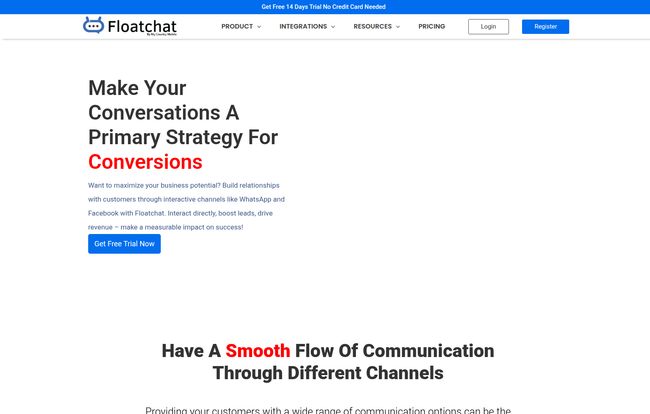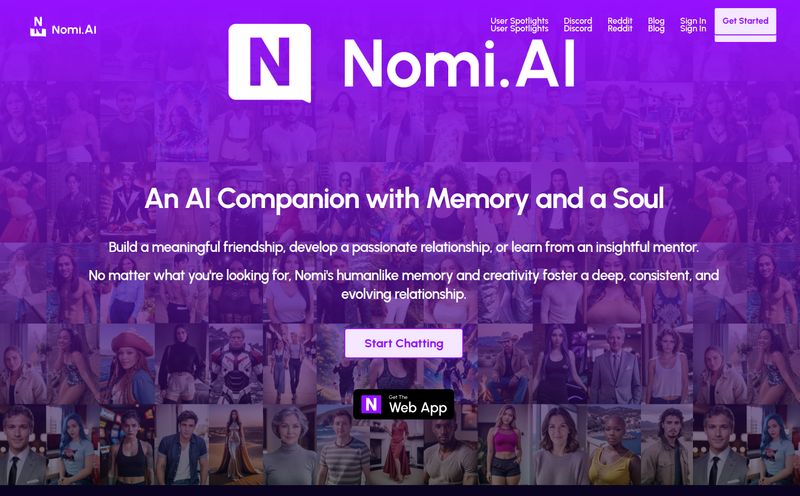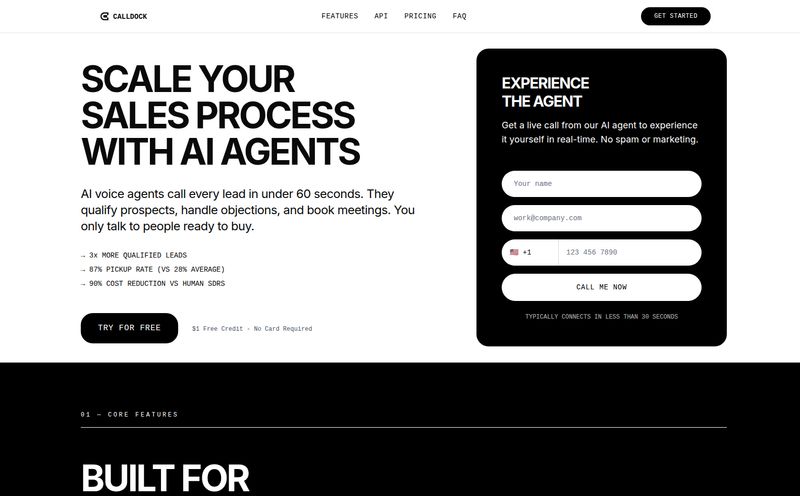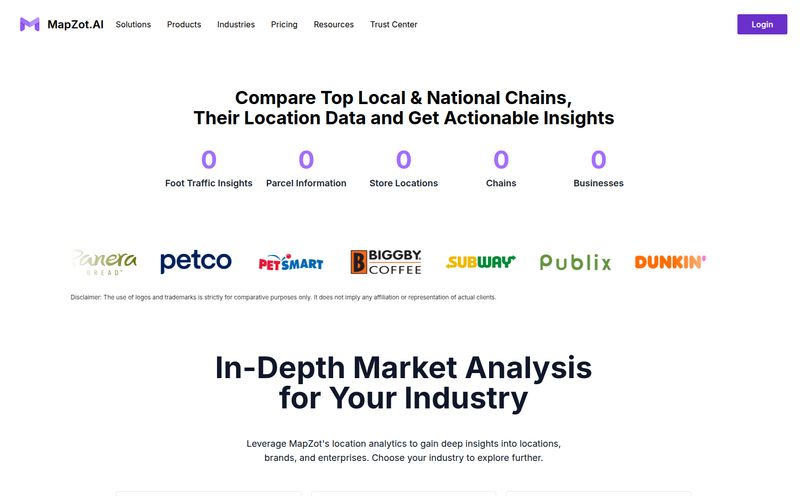If you run a business in 2024, your customer communication is probably a hot mess. You've got DMs on Instagram, messages on Facebook, pings on WhatsApp, a live chat widget on your site that someone checks... sometimes. It feels like you’re a digital air traffic controller, but all the planes are on fire and flying in different directions. I've been there. My clients have been there. It’s a special kind of chaos that can sink an otherwise great company.
For years, we've been promised a savior: the “omnichannel” platform. One inbox to rule them all. Many have tried, and honestly, many have been clunky, overpriced, or just... underwhelming. So when I started seeing the name FloatChat pop up, my inner SEO and traffic-gen cynic raised an eyebrow. Another one? But I’ve learned you can’t knock it ‘til you’ve tried it. So I rolled up my sleeves and took a look under the hood.
So, is FloatChat just another drop in the ocean of SaaS tools, or is it the lifeboat your business needs? Let's get into it.
What Exactly is FloatChat? (And Why Should You Care?)
Forget the corporate-speak for a moment. At its heart, FloatChat is like a master control room for every single conversation you have with a customer. Imagine all those separate streams—WhatsApp, Messenger, Telegram, your website chat—all flowing neatly into one single, manageable river. That’s the core promise. It’s an omnichannel platform, but with a pretty significant AI brain bolted on.
This isn't just about seeing all your messages in one spot. It’s about being able to act on them intelligently. The AI part means you can build chatbots that handle the easy stuff 24/7, so your human team can focus on the problems that actually require a human brain. It’s about turning a reactive, chaotic support system into a proactive, organized customer experience machine. And in a world where a single bad review can tank your reputation, that’s a pretty big deal.

Visit FloatChat
The Standout Features That Caught My Eye
A feature list is just a list. What matters is how it actually solves a problem. Here’s what stood out to me from a 'been-in-the-trenches' perspective.
The All-in-One Inbox: Sanity Restored
This is the main event. The central hub. Before tools like this, my typical workflow involved having about seven tabs open just to keep up. It was inefficient and, frankly, stressful. The idea of closing all those tabs and living in one clean interface is more than just a convenience; it’s a genuine productivity booster. When your team isn’t constantly context-switching, they can answer queries faster and more accurately. It's simple, but it's the foundation of everything else FloatChat does.
Building a Bot Without Being a Coder
Okay, I’ll admit it. When I hear “AI chatbot builder,” I get a little nervous. I’m an SEO guy, not a developer. The thought of wrestling with code and complex logic flows gives me hives. FloatChat uses a visual builder, which is a massive sigh of relief. It’s more like putting together a flowchart than writing a program. You can create conversation paths, set up automated replies for common questions (“What are your hours?” “Where is my order?”), and qualify leads without needing to phone a developer friend. This is huge for small businesses and solopreneurs who wear all the hats.
Integrations That Actually Matter
A platform is only as good as its ability to play nicely with others. FloatChat seems to get this. Seeing integrations like Shopify, Salesforce, and HubSpot on their list is a good sign. But the real MVP here is Zapier. For those who don't know, Zapier is like the universal duct tape of the internet. It connects apps that don't have a direct connection. This means you can hook FloatChat up to thousands of other tools—link a new chat lead directly to your email list in Mailchimp, or create a task in Asana for a complex support ticket. This is where you move from just managing conversations to building powerful, automated workflows.
The Real-World Benefits: More Than Just a Fancy Inbox
So what does all this tech actually do for your bottom line? It's about turning conversations into conversions and customers into fans.
I worked with an e-commerce client once whose Instagram DMs were a goldmine of buying questions that went unanswered for hours. By the time my client's small team replied, the customer had lost interest or bought from a competitor. An automated system like FloatChat could have greeted that user instantly, answered their basic sizing question via a chatbot, and even sent them a direct link to the product. That's a lost sale recovered, right there. It also frees up your team from the soul-crushing monotony of answering the same five questions a hundred times a day, letting them focus on high-value interactions. This isn't just about saving money on headcount; its about making the team you have more effective and, frankly, happier.
Let's Talk Money: A Look at FloatChat Pricing
Alright, the all-important question: what's this going to cost me? FloatChat has a tiered structure that’s pretty standard for SaaS, but the value proposition is what we need to look at. Let's break it down conversationally.
Here’s a quick comparison. For full details, you should always check their official pricing page.
| Plan | Price | Best For |
|---|---|---|
| Professional | $39 / month | Solo entrepreneurs or very small teams just getting started with omnichannel support. |
| Business | $99 / month | Most growing businesses. This is the sweet spot with more users, more channels, and key integrations like Shopify. |
| Enterprise | Custom | Large companies with complex needs, requiring unlimited everything and premium support. |
My take? The $99/month Business plan is where the real magic happens for most SMEs. It unlocks the API and the e-commerce integrations that can generate a serious ROI. Sure, $99 might seem like a lot, but compare it to the cost of a part-time employee to manage DMs. Or the cost of lost sales from slow responses. Suddenly, it looks like a pretty solid investment.
No Tool is Perfect: The Potential Downsides
I’m not here to sell you a dream. Every tool has its quirks and limitations. Being aware of them is key to making a good decision.
The Initial Setup Hurdle
While the builder is visual, don't expect to be a master chatbot architect in ten minutes. Any powerful tool has a learning curve. You’ll need to invest some time upfront to connect your channels, design your conversation flows, and train your team on teh new inbox. It's an investment, not an instant fix.
Your Chatbot is Only as Smart as You Make It
This is the most important caveat for any AI tool. It's not magic. A poorly designed chatbot is more frustrating than no chatbot at all. The principle of “garbage in, garbage out” applies perfectly. The effectiveness of FloatChat's automation is directly tied to how well you understand your customers' questions and how thoughtfully you build the bot's responses.
The Integration Tango
While the integrations are a huge pro, they also create dependencies. If your CRM or another connected app has an outage, it can disrupt your FloatChat workflows. It’s a minor point, but something to be aware of in any interconnected tech stack.
My Final Verdict: Should You Float with FloatChat?
So, we circle back to the main question. Is FloatChat worth it? In my professional opinion, for a huge chunk of businesses out there, the answer is a resounding yes.
If you're a small-to-medium-sized business, an e-commerce store, or an agency managing multiple clients, the chaos of multi-channel messaging is probably a major pain point for you. FloatChat offers a genuinely elegant and powerful solution. It brings order to that chaos, automates the repetitive work, and provides a clear path to turning conversations into tangible business results.
Who should skip it? Maybe massive corporations that need a completely bespoke, in-house solution. Or, conversely, a solo blogger who gets maybe three emails a week. For everyone in between, FloatChat presents a seriously compelling case. It’s a tool built to solve a modern problem in a modern way.
Frequently Asked Questions about FloatChat
- 1. What kind of platforms can I connect to FloatChat?
- It integrates with most of the major social and messaging channels, including WhatsApp, Facebook Messenger, Instagram, Telegram, and website live chat. The list is always growing, so check their site for the latest.
- 2. Do I really need to be a coder to build a chatbot?
- Nope. They use a visual, drag-and-drop builder. If you can make a flowchart or a mind map, you have the skills to build a basic bot in FloatChat. It’s designed for business owners, not programmers.
- 3. How does the “valid chats” limit on pricing plans work?
- This is a common model for chat platforms. A "valid chat" is typically counted as a unique conversation with a customer within a 24-hour window. It’s a way to price based on usage. The Business plan's 5,000 chats/month is a pretty generous starting point for most SMEs.
- 4. How secure is my customer data with FloatChat?
- According to their website, they take security seriously and are compliant with regulations like GDPR. They use encryption and other standard security protocols to protect data, which is essential when you're handling customer information.
- 5. Can FloatChat completely replace a customer support person?
- No, and it shouldn't. The goal isn't to replace humans but to empower them. It handles the simple, high-volume, repetitive questions, which frees up your human agents to tackle the complex, sensitive, and high-value issues where they're needed most.
- 6. What kind of analytics does it offer?
- The higher-tier plans offer advanced sales and agent analytics. You can track things like response times, conversation volume, customer satisfaction, and even sales generated through chat, helping you measure the ROI of your support efforts.
Bringing It All Together
Managing customer communication doesn't have to be a nightmare of a dozen open tabs and missed opportunities. Tools like FloatChat are here to streamline, automate, and organize. By unifying your channels and leveraging smart automation, you can not only save time and money but also deliver the kind of responsive, personalized experience that turns a one-time buyer into a lifelong fan. And in this competitive world, that's everything.



